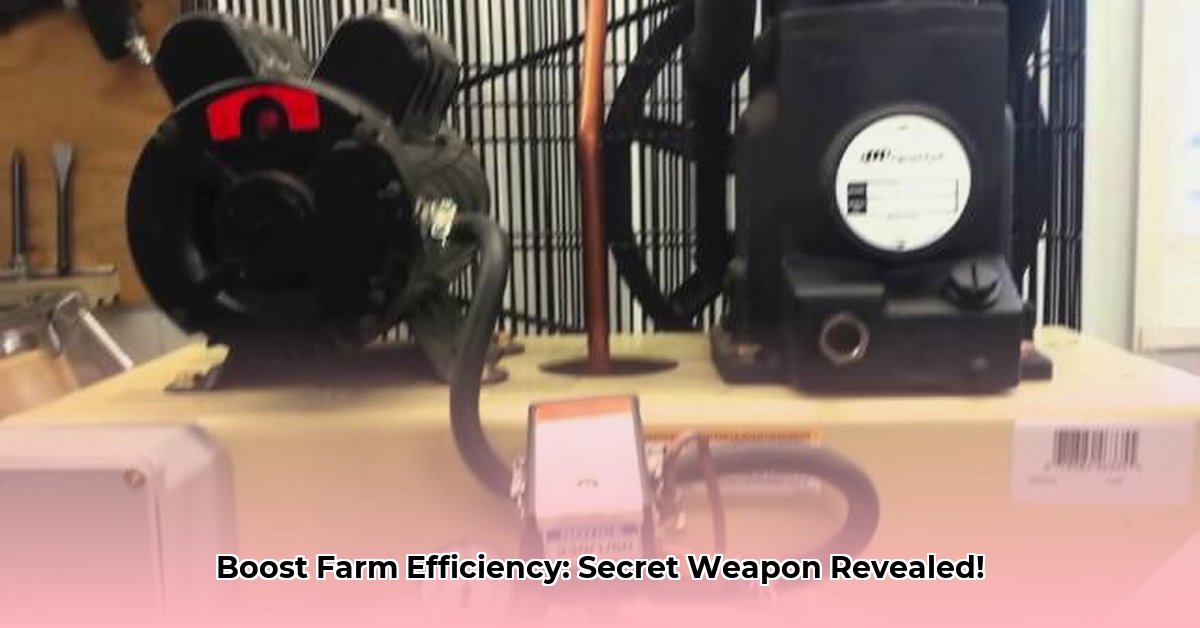
Running a farm is demanding, and costs are constantly rising. But what if you could boost efficiency and lighten your environmental footprint? This guide demonstrates how Ingersoll Rand air compressors from Tractor Supply can help you achieve that. For more details on Ingersoll Rand compressors, check out this helpful resource. We'll guide you through selecting the ideal compressor for your farm, ensuring its smooth operation, and minimizing energy expenses. We'll compare Ingersoll Rand to other brands, provide simple maintenance instructions, and offer expert advice on saving money. Whether you're a seasoned farmer or a newcomer, this guide empowers you to make informed decisions about your air compressor needs – enabling you to work smarter, not harder, and contribute to environmental sustainability.
Sizing Up Your Air Needs: Selecting the Right Compressor
Before you start shopping, consider your air compressor's intended uses. What tasks require compressed air? Are you spraying pesticides, inflating tires, using pneumatic tools, or something else? How frequently will you use it? A small farm with occasional needs will have different requirements than a large-scale operation relying on compressed air daily.
The frequency and intensity of your needs determine the compressor's size and type. A small, lightweight model might suffice for occasional tire inflation. However, continuous use of a demanding pneumatic tool requires a significantly more robust machine. This initial assessment also helps determine your budget, as prices vary greatly depending on features and power. Don't underestimate your needs!
Ingersoll Rand Air Compressors: Power and Reliability
Ingersoll Rand boasts a strong reputation for durable, dependable equipment. Tractor Supply offers various models, from portable units for quick jobs to larger, stationary options for continuous use. Three crucial factors to compare models are horsepower, tank size, and CFM (cubic feet per minute).
Horsepower represents the compressor's power – higher horsepower means more power for demanding jobs. The tank's capacity (in gallons) determines the stored compressed air amount. A larger tank ensures a consistent air flow, preventing pressure drops during extended tasks. CFM indicates the air volume the compressor delivers per minute. Higher CFM is necessary for tools requiring large air volumes.
Reciprocating vs. Rotary Screw: Choosing the Right Compressor Type
Two main Ingersoll Rand air compressor types are available at Tractor Supply: reciprocating and rotary screw. Reciprocating compressors are workhorses—generally more affordable and suitable for occasional use, perfect for smaller tasks. However, they may be less energy-efficient for prolonged use and have shorter lifespans with heavy daily use.
Rotary screw compressors are marathon runners. They have a higher upfront cost but are built for continuous heavy-duty use. They provide more consistent air pressure and are significantly more energy-efficient in the long run. The choice depends entirely on your typical usage and budget.
| Compressor Type | Advantages | Disadvantages | Best Suited For |
|---|---|---|---|
| Reciprocating | Lower purchase price, readily available | Less efficient, higher running costs | Intermittent use, smaller tasks |
| Rotary Screw | High efficiency, longer lifespan, consistent airflow | Higher initial cost | Continuous heavy use, large farms |
Selecting Your Perfect Ingersoll Rand Air Compressor: A Step-by-Step Guide
Choosing the right air compressor is a process; let's break it down:
List Your Air-Powered Tasks: Make a comprehensive list of all tasks using compressed air. Estimate the typical duration of each task.
Match Your Needs to Specs: Review Ingersoll Rand air compressor specifications at Tractor Supply. Pay close attention to horsepower, CFM, and tank size. Overestimating your needs is better than underestimating.
Reciprocating or Rotary Screw?: Based on usage and budget, choose the appropriate compressor type. Consider long-term efficiency.
Tank Capacity: A larger tank generally provides more consistent air pressure.
Portability or Stationary?: Decide if mobility is essential.
Read Reviews: Check online reviews from other farmers for real-world insights.
Maintaining Your Compressor: Efficiency and Longevity
Regular maintenance is crucial for efficient and long-lasting compressor operation. This includes checking oil levels, draining condensate (water), and inspecting hoses and belts for damage. Regular maintenance prolongs lifespan, reduces unexpected repairs, and minimizes downtime.
Consider the environmental impact. Some compressors are more energy-efficient, leading to lower energy bills and a smaller carbon footprint. Dispose of the compressor responsibly at the end of its life.
Reaping the Rewards: Increased Efficiency and Sustainable Practices
Investing in the right Ingersoll Rand air compressor from Tractor Supply is investing in your farm's future. By carefully considering your needs and following these steps, you'll enhance your farm's efficiency and contribute to sustainable agricultural practices. The right tools can significantly improve productivity and help your farm thrive. Remember to always consult the owner's manual for specific maintenance and operational instructions for your chosen model.